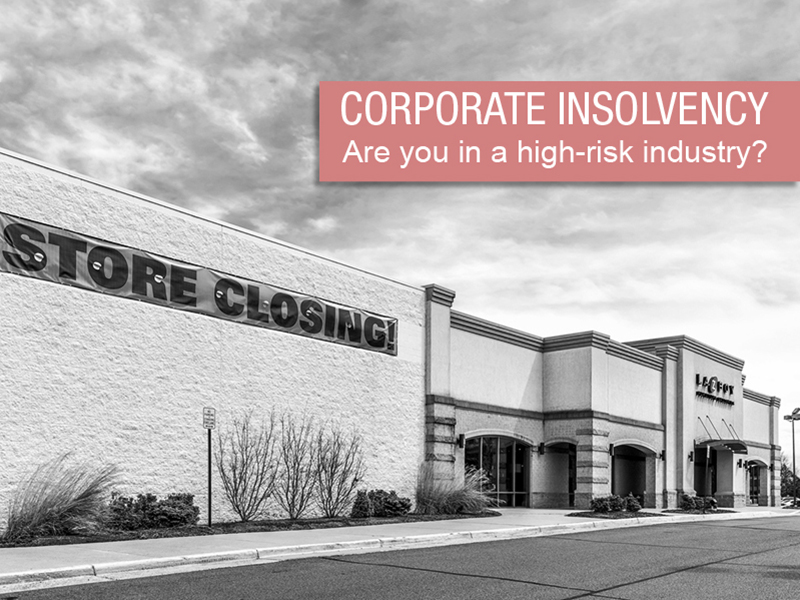
What’s your risk of corporate insolvency?
High? Medium? Low?
Most company directors and business owners would have no idea about the answer. They are not across the numbers of liquidations and administrations in their industry.
After all, why does it matter?
Well, if there are large numbers of insolvencies in your industry, understanding the reasons why may assist you in avoiding the common pitfalls yourself…
The top five industries for corporate insolvency
The five industries with the most corporate liquidations and administrations are:
- Business and personal services
- Building and construction
- Accommodation & food services
- Retail trade
- Transport, postal & warehousing
If you are in one of these five industries? How can you avoid financial difficulty? Here are some key takeaways to keep your own business out of trouble and avoid corporate insolvency?
Business and personal services
Business and personal services includes all business that supply services to a person or business.
The wide-ranging nature of this industry undoubtedly contributes to its high ranking. It also makes it difficult to focus on specific issues faced by the various businesses of different natures operating in this industry, however, typically some of the issues faced by these business are similar to those described below for the other four industries.
Building and construction
The plight of builders and subcontractors is well known. Some key business risks in construction are:
- Builders and subcontractors need to pay for services and supplies before being paid themselves. If a developer fails to pay a builder’s progress claims or finds some dispute and reduces the amount paid, they need to find extra money to pay subcontractors used on the site. This often means that builders pay certain subcontractors over others, giving priority to those working on more important job sites.
- It’s a highly competitive industry, which leads to underquoting and reduced margins in order to win work which leaves very little to no room for net profit.
- The high rate of failure means plenty of builders and subcontractors are caught out themselves by the insolvency of major industry players. This becomes a cycle of failed businesses.
- Rapid expansion or taking on a significant project with insufficient resources.
- Poor financial management and lack of record keeping (proper records are vital to business success).
We have provided an extensive list of steps builders and subcontractors can take to avoid or minimise the risks of insolvency here.
Accommodation & food services insolvency
Some key business risks in this industry are:
- Extremely high wages.
- High rent or premises costs.
- Vulnerability to economic shifts and changing consumer trends and preferences.
- The highly competitive nature of the industry.
- High fit out costs for restaurants, payable up front and usually worth a fraction of what it costs to install after a couple of years.
Retail trade insolvency
Some key business risks in this industry are:
- Extremely high wages and premises costs.
- Increasingly lower cost of camparable products being sold online.
- Digital disruption.
- Vulnerability to economic shifts and changing consumer trends and preferences, including a decline in physical attendance in stores.
- Competitive nature of the industry.
Transport, postal & warehousing insolvency
Some key business risks in this industry are:
- It’s a highly competitive industry, which leads to underquoting and reduced margins in order to win work: this leaves very little to no room for net profit.
- High overheads, including fuel, wages/subcontractors’ costs and premises costs (it takes substantial space to house 20 trucks).
- High capital investment, through the purchase of vehicles.
- Poor financial management and lack of record keeping.
Take the steps now to protect against insolvency
Recognising the key business risks in these five industries can help protect your own business from liquidation or administration.
In particular, watch out for high overhead costs such as wages, premises costs, and fit-out expenses. Businesses with “lumpy” income can also face problems with paying recurring expenses like wages and rent.
A simple measure to help deal with this is to keep good financial records and work out what your monthly expenses are for the next six months. Then add a percentage to these expenses figures and that’s your revenue target to aim for. You should also regularly consult with your accountant and at the first sign of financial difficulty obtain professional advice.
If you’re in one of these industries and struggling financially get in touch on 07 3221 0055 or by email to mail@pearceheers.com.

